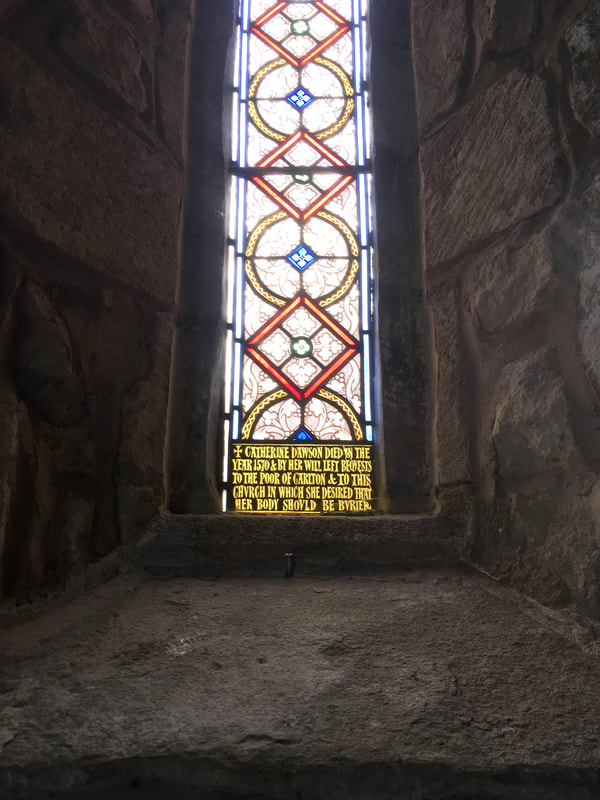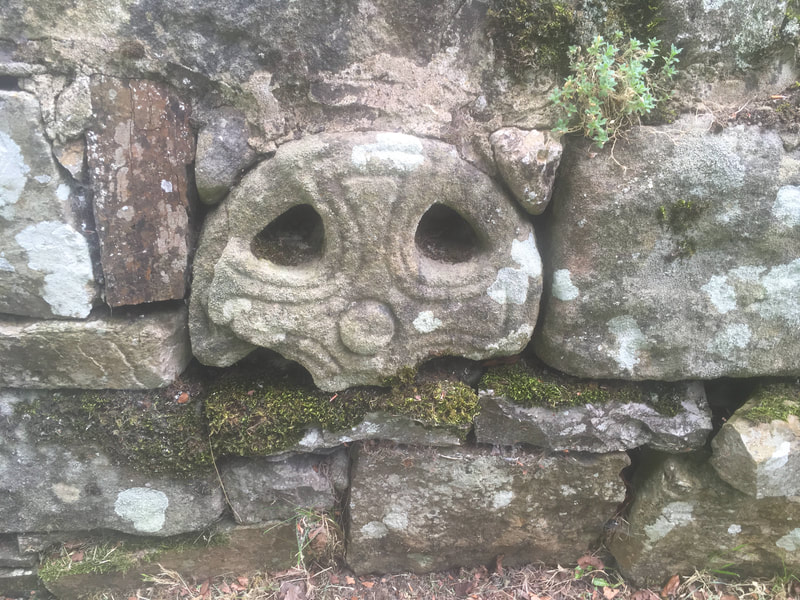
Take the road out of Middleham towards Kettlewell and just after the gallops (used to train racehorses), you'll see a drive on the left leading to Coverham Abbey and then a little further on, a sign to "Historic Church".
This little spot is a delight, frozen in time and hidden from the world.

It was never a huge order, founded by monks from northern France and probably housing fewer than 20 monks clad in white habits, known as the 'White Canons'. Visiting this serene little haven now, it's hard to imagine that anyone would ever bother to disturb their peace but the abbey was at the centre of several dramas: attacked by rampaging Scots in 1318; dissolved by Henry VIII in 1536; and then used as a rallying point for those wanted to go back to the old religion. It's now in private hands, with a home built from some of the old stones. The original elegant arches can still be seen.

I derive an odd pleasure looking at ancient gravestones, sad to read of children carried away too soon, and quietly hopeful when I find a number of graves belonging to those who lived to over 70. Sometimes the stones yield more information, telling of great deeds or pointing to the area's history.
Several gravestones are connected to horse-racing, for which nearby Middleham is famous. I noticed a couple for people from Newmarket, who'd presumably come to Middleham to sell or train horses. A jockey called John Osborne is commemorated, known as the 'Bank of England' because he was such a safe bet, and the grave of 19 year old jockey, Benjamin Thompson, has a fine horse carving. Next to this is the grave of James Fieldhouse who was killed by lightning, together with his horse. Apparently there's another grave, dug by its occupant but I didn't find that one.

There's a gate at the far side of the churchyard, facing the church door. Go through it and you'll hear the loud rushing of the stepped water fall which once fed a mill pond, and which now joins the River Cover. Just around the corner is an ancient beautiful arched bridge.







 RSS Feed
RSS Feed
